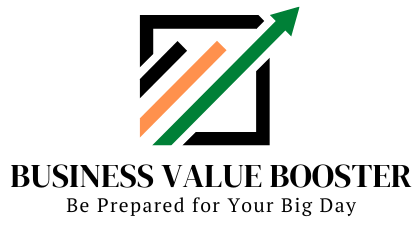A previous post reminded you that in 2022-2023 those COVID-era “free money” programs are going to start demanding repayment. Should you pay the minimum necessary, or get it off your books? Many owners think that a healthy line of credit and a large business loan are indicators of a healthy business. Maybe so, when you decide to sell that business, that loan is going to detract seriously from the business value even though it won’t be the seller’s problem. Why is that?

The previous two posts in this topic
- recapped the requirements to repay Federal loans, or at least go through the motions to get them forgiven (where that applies)
- provided paths to take to pay off those loans when selling – and a path to avoid
Loans are often needed to help you invest in the business to take it to new levels. Quite often, owners use them to ride over rough spots. That might be necessary too. If the business depends on loans to get the bills paid, that’s a problem, and buyers will see your business (correctly) as a money-losing proposition that they should be able to buy for little or nothing — if they don’t just head in the opposite direction.
Misconception #3: Having a substantial loan proves how creditworthy the business is
No. It proves how creditworthy the business was when the loan was issued.
Your small business doesn’t work using the inverted logic of Wall Street where you can owe so much that the banks can’t afford to call a loan due. On Main Street, banks have the leverage, and things start to get ugly if a loan isn’t paid properly. And when you decide to sell your business, you are essentially calling your loan on yourself.
Many sellers know that buyers prefer to see a business that have a pre-qualification letter from a bank, preferably for an SBA loan, to prove that the business is strong enough to make a reasonable profit even after taking on a loan. That’s a pre-qualification letter, addressed to the possibility of a byer taking out a new loan, not an actual loan to be issued to you, the seller. If you actually did take a loan, buyers are going to want to know how you plan to pay it off before closing. Even more importantly they will want to know why you decided to take it in the first place. They’ll be worried that there is some hidden structural defect in the business model such that the business cannot sustain its own operations without borrowing — i.e., that it is really losing money, not making it, regardless of what the books say.
Hopefully whatever you did with the money generated enough extra revenue to generate even more profit to cover the loan and more. If that is not the case, you’re worse off than you were in the first place, because you aren’t making any more money than before, but you have a long-term obligation to make payments which will constrain other choices you might want to make.
True, if you have the means to pay the loan off, and thereby eliminate your loan payment, then the business will probably be throwing off enough money to afford the buyer’s new loan.
But if you don’t have the cash on hand, you may be unable to sell the business at all until the loan is paid off. Or, as described in the preceding section (Misconception #2), you may be forced to accept “seller financing” in the form of an agreement to pay off your bank instead of paying you.
There is another downside of carrying a loan if you don’t need it, at least during the selling process. Your selling price is largely determined as a multiple of your profitability. As soon as the loan went into action, the real profits– what you put in your pockets — dropped by the amount of that loan, and they will stay reduced until the loan is paid off. For small businesses, buyers may understand the various forms of accounting reports that tell you the loan is doesn’t count against your operating profit. In small business land, owners and buyers are mostly interested in cash flow, and everything counts.
Within a few minutes of looking at your financials, a buyer will see is that your business grosses, say $2 million and nets $200,000. That sets a price expectation in the $150,000-500,000 range. Yes, you can “add back” your loan payments to arrive at a higher EBITDA or Seller’s Discretionary Earnings, which might then pop up to $300,000, taking your valuation up to $1 million, but you’re already inviting scrutiny of the financials. That’s not happening after you have a contingent offer during the due diligence period to confirm that the books match what you said in the prospectus. It’s happening up front as buyers are trying to decide whether they are interested in your busines sin the first place. It owuld be nice for sellers if there was a lot more analysis in the buyers’ down-select processes, but the truth is that there are almost always more businesses available than there are serious buyers. They aren’t going to invest their time (and money on their CPA) trying to unravel your finances. They’ll just move on to another alternative.
Bottom Line
If you take on debt, make it count for something that will increase profits in the near future. If you’re using it to cover operating expense, you are in deep trouble, and your busines is essentially unsellable. You’ll be lucky to get someone to take it off your hands for free.
If you are currently the holder of a loan on your company and you are planning on selling it any time in the next year or so, you’ll need to start figuring out how to get the loan paid off in the next few months. If not, the value of you business will be reduced by more than the loan value, as the loan retirement will come from either from the cash at the closing table, or “seller financing” as the buyer accepts assignment of the loan, and either way the buyer is likely to extract additional price concessions for doing you this favor.
A reminder from the Part 2 post: do not think about holding onto that debt under the table, unless all parties, including the lender, are in agreement. Murphy of Murphy’s Law has a seat at the table and may well create long-term nightmares for you.
Want to chat about where your business is and how to make it look its best when you decide to sell it? Pick a time of your convenience at:
https://calendly.com/dbrownpm/30-minute-business-buy-sell

